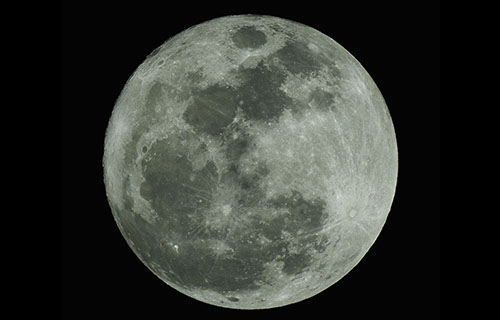Though data from orbiters have suggested presence of вода ice, the exploration of лунен craters in the polar regions of moon has not been possible due to the absence of suitable technology to power лунен rovers in the perpetually dark, super cold areas having a temperature of –240°C. The project PHILIP (‘Powering rovers by High Intensity Laser Induction on Планети’) commissioned by European Космос Agency is ready to develop prototypes that would provide laser power to these rovers in an effort to explore evidence of existence of вода in these craters.
Луна не се върти около оста си, тъй като се върти около земята, следователно другата страна на луната никога не се вижда от земята, но и двете страни получават две седмици слънчева светлина, последвани от две седмици нощ.
However, there are sunken areas in craters situated in the polar regions of moon that never receive sun-light because low angle of sunlight that leave the deep interiors of the craters in shadow forever. This perpetual darkness in the polar craters make them super cold in the range of –240°C corresponding roughly to about 30 Kelvin i.e. 30 degrees above absolute zero. The data received from the лунен orbiters of ESA, ISRO намлява НАСА have shown that these permanently shadowed areas are rich in hydrogen, suggestive of presence of вода (ice) in these craters. This information is of interest for science as well as a local source of ‘вода and oxygen’ for future moon human habitation. Therefore, there is a need of a rover that could go down to such craters, drill and bring sample for testing to confirm presence of ice there. Given лунен rovers are usually solar powered, this has not been achieved so far because it has not been possible to ensure power supply to rovers while it explores some of these dark craters.
Едно от съображенията беше да има роувъри с ядрено задвижване, но се оказа, че това не е подходящо за изследване на лед.
Вземайки пример от докладите за използване на лазер за захранване на дронове, за да ги задържи нагоре за по-дълго време, проектът ФИЛИП (‘Powering rovers by High Intensity Laser Induction on Планети’) was commissioned by European Космос Agency to design a complete захранван с лазер проучвателна мисия.
The PHILIP project is completed now and the ESA is one step closer to powering лунен rovers with lasers to explore the super cold dark лунни кратери близо до полюсите.
ESA would now begin to develop prototypes for exploring the dark craters that would provide evidence for confirmation of the presence of вода (ice) leading to realisation of human dream to inhabit this satellite.
***
Източници:
Европейската космическа агенция 2020. Активиране и поддръжка / Космическо инженерство и технологии. Лазерно задвижван роувър за изследване на тъмните сенки на Луната. Публикувано на 14 май 2020 г. Предлага се онлайн на адрес http://www.esa.int/Enabling_Support/Space_Engineering_Technology/Laser-powered_rover_to_explore_Moon_s_dark_shadows Посетен на 15 май 2020 г.
***






































